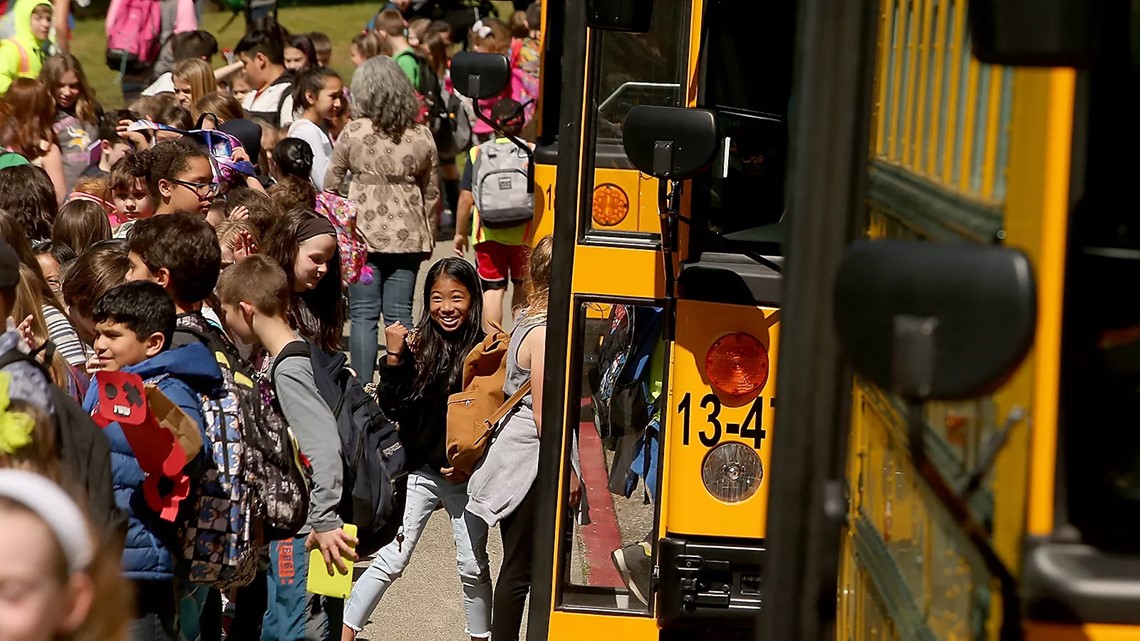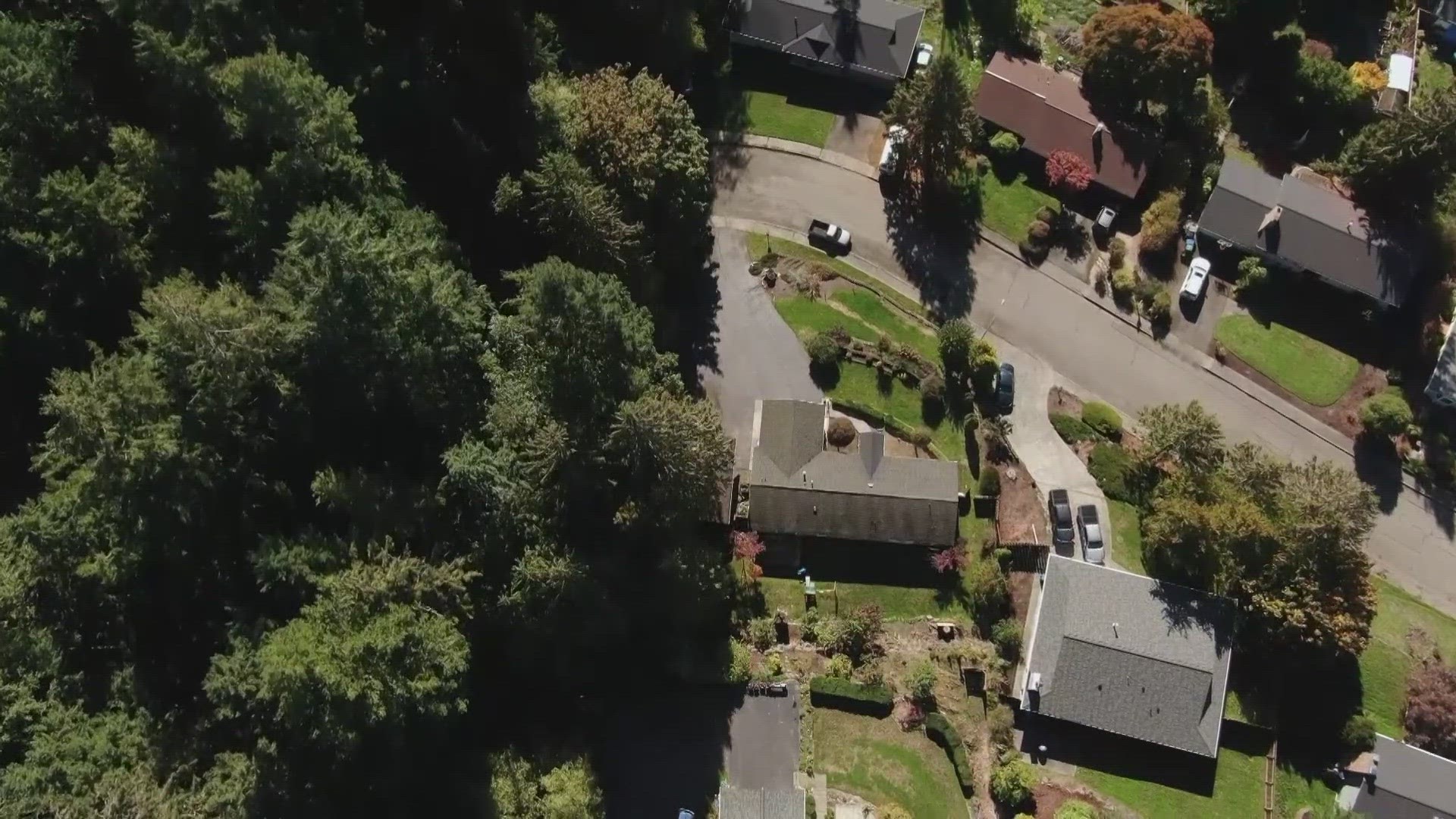BAINBRIDGE ISLAND — Your child doesn't get off the school bus as expected. You panic. Call the bus barn. The minutes until they figure out your kid got off at the wrong stop — to hang with a friend or out of sheer spaciness — feel like agonizing hours.
Has this ever happened to you?
Parents on Bainbridge Island now have access to an app that lets them know when and where their students board and exit the bus. About 1,200 families have downloaded the free app since it became available in October, said Rebecca Lombardo, transportation supervisor for Bainbridge Island School District, with roughly 3,800 students.
The student ridership app is part of a suite of fleet-tracking software for K-12 schools developed by the Indiana-based Synovia Solutions.
Technology addresses bus safety
Synovia serves roughly 700 districts in the U.S. and Canada. Established in 2001, the company was one of the first in what is now a rapidly growing field of school bus tracking and parent notification systems, said CEO Jon King.
"The overriding thing back then was efficiency," King said. "That had an ancillary effect on the safety of kids in the vehicle."
Synovia offers a basic GPS tracking system with optional add-on features. One option, a Here Comes the Bus app, lets parents (and students) keep track of the bus within a given area, including schools and neighborhoods. The app is free to parents of students in districts that subscribe to Synovia's services.
North Kitsap School District since 2017 has piloted Synovia's tracking system — including Here Comes the Bus — on four of its 65 buses and is ready to expand the system to its entire fleet.


North Kitsap is holding off for now on the individual student tracking option, which is an added expense to the district, said transportation director Jeff McGarvey.
Here Comes the Bus improves safety by potentially decreasing the time a student waits at the bus stop on dark mornings, say transportation officials in North Kitsap and Bainbridge.
With the app, if the bus is running late, parents will get a notification on their smartphone or laptop. Kids can wait inside instead of in the pouring rain. Parents can confirm when the bus arrives at school. They'll be notified if a different bus is in use on the route for a day. And in the event of an emergency, they'll get a push alert.
System has panic button
Synovia's GPS tracking system shows transportation officials the real-time location of each bus in the fleet. Additional features track data like speed, idling time, when paddles and flashing lights are deployed and engine diagnostics.
Lombardo said the GPS tracking system Bainbridge has used for three years has helped with fuel efficiency, routing accuracy and driver performance. It also helps her small office staff stay better connected with the district's 30-plus buses while they're on the road.
"When buses leave the barn, I don't know who has their radio on or are they in trouble," Lombardo said. "Every day, every route, every trip, you just hope for a safe trip."
Now, if someone's forgotten to turn on their radio, she can message the driver via a tablet on board that links to the system. The tablet gives drivers a panic button to use in case of emergencies.
McGarvey said the system promises a more predictable schedule for families. Transportation officials will monitor actual route times compared with published times and adjust accordingly.
"Of course for me, the big feature is the customer service piece, making sure our times are correct," McGarvey said.
Districts' subscription costs for Synovia's basic tracking feature plus options — like Here Comes the Bus and student ridership tracking — range from about $28 to $38 per bus per month. Tech support is included.
Districts raise privacy concerns
On Bainbridge, the individual student tracking app has been well-received by parents, Lombardo said. Like Here Comes the Bus, it's free to families with students in the district.
Some school districts have raised privacy concerns about the individual student tracking system, which uses either the barcode on a student ID or a radio frequency ID, usually attached to a fob on the student's backpack. Could students, including those covered by protection orders, become subject to cyberstalking?
"It's not 100 percent preventable," King said. "The short answer is our system in that description is not foolproof."
An alternative to barcodes or RFID readers is a mobile data terminal, but that requires the driver to select the name of each student as they board or exit the bus.
Synovia regularly reinvests in research and development, based on feedback from consumers, King said. Improving safety features has become a prevailing theme.
"I'd say at the end of the day really the most important emphasis in the technology we look at deals with child safety," King said. "At the end of the day, you want to say you got all the kids to and from school safely. There were no fatalities, no accidents."
One optional tool that's now a requirement in California is a child-check device to prevent students from being inadvertently left on the bus at the end of the day. Drivers must walk to the back of the bus after turning off the engine to deactivate the device, forcing them to check each seat. California passed a law requiring child-check devices in 2016 after a 19-year-old special needs student was left on a bus and died.
An increasing shortage of school bus drivers and districts' increasing reliance on substitute drivers makes safety and navigation software all the more key to students' safety, King said.



